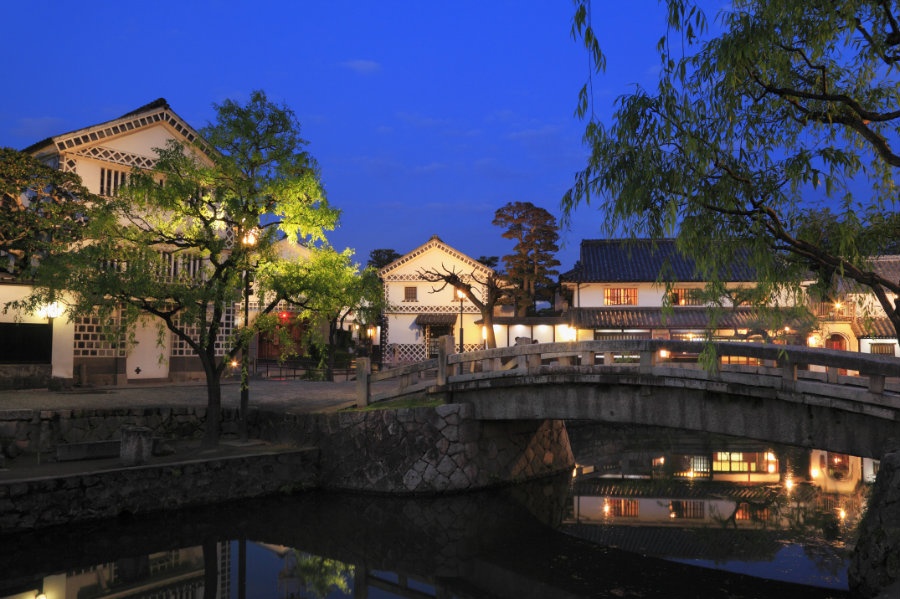Kurashiki Bikan Historical Quarter
Located in Okayama Prefecture facing the coast of the Seto Inland Sea in western Japan, Kurashiki is a historic and picturesque city on the Takahashi River. Home to some 500,000 people, Kurashiki originally rose to prominence as a river port and center for produce from all over the Bitchu region.
370 years ago, the Tokugawa clan in power at that time established a magistrate’s office in Kurashiki and developed the town along the narrow canal as a trade center. Boatmen skillfully used the rising and ebbing tides from the sea to propel their vessels up and down the canal to transport various goods, such as salt.
Just 10 minutes away on foot from Kurashiki Station is the immaculately preserved Kurashiki Bikan Historical Quarter, recognized as one of the most charming merchant’s quarters in all Japan, and regularly used as a backdrop for filming period dramas. Tourists flock from all over to marvel at the white-walled storehouses, narrow stone-paved streets and scenery that are throwbacks to an earlier age.
One of Kurashiki Bikan Historical Quarter’s main attractions is the Ohara Museum of Art, founded by local entrepreneur Magosaburo Ohara in 1930 to honor Torajiro Kojima, a Western-style painter who had died the previous year. The Main Gallery—fronted by two imposing sculptures by Rodin—features artworks that include masterpieces by El Greco, Monet and Picasso.
Nearby is the Villa Yurinso, built by Ohara for his wife. It is nicknamed by the locals “the Green Palace” for its unique roof tiles that appear green from certain angles. The area is also home to many other museums such as the Kake Museum of Art, The Museum of Folkcraft, the Japan Toy Museum and the Kurashiki Archaeological Museum. These buildings have histories that span the Edo (1603-1868), Meiji (1868-1912) and Taisho (1912-1926) eras.
Further down the canal is Kurashiki Ivy Square, a multi-purpose public space that was once a cotton mill operated by the famous textile manufacturer Kurabo. Replete with verdant ivy and sequoia trees, its redbrick buildings are inspired by English architecture. It was designated as an official Heritage of Industrial Modernization site in 2007. At dusk, lights appear along the canal and in the Ivy Square area, offering tourists a portrait of an older Japan.




